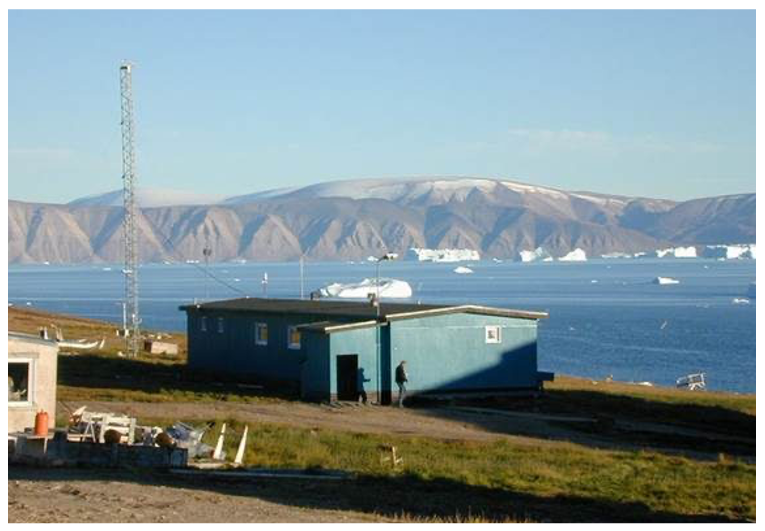The DMI Geophysical Observatory Qaanaaq

The DMI Geophysical Observatory Qaanaaq, DK
The DMI Geophysical Observatory Qaanaaq is owned and managed by the Danish Meteorological Institute, Copenhagen, Denmark.
Located at the outer perimeter of the city of Qaanaaq, NW Greenland, the station connects different monitoring infrastructures in the region. In addition to classical meteorological measurements, it serves as a multidisciplinary geophysical observatory. Ongoing monitoring includes infrasound, geomagnetism, ocean variables, and cryosphere.
Contribution to POLARIN key research challenges: 1, 3, 4, 5, 6, 7
Contact: Station manager Steffen M. Olssen, smo[at]dmi.dk
Website
https://eu-interact.org/field-sites/the-dmi-geophysical-observatory-qaanaaq/
https://www.interact-gis.org/Home/Station/90
Location
The DMI Geophysical Observatory Qaanaaq is located at the outer perimeter of the city of Qaanaaq in North West Greenland. The station connects different monitoring infrastructures in the region. Qaanaaq is a modern Greenlandic town located some distance away from the National Park in North East Greenland and the nature reserve area in the Melville Bay to the south. Still, in particular marine activities are regulated in order not to disturb the Narwhal during summer. The city of Qaanaaq is located on a small peninsula at the northern flank of the deep Inglefield Fjord. A number of glaciers terminate into the fjord and the prominent North Water Winter Polynya reach to the mouth of the fjord. Qaanaaq connects a number of small settlements in the region.
Facilities
The main station facility includes a small workshop but at present no lab facilities. It has an apartment for 2-4 persons with a kitchen and shower. The station meets local standards and stays open year-round, though some upgrades are planned during the coming years. Internet access and telephone are available and the local manager has a pick-up van.
Services offered
DMI offers a logistic hub for small research groups and support from the station manager and connected team. There is direct access to the cold, dry Arctic tundra landscape surrounding the city as well as to the fjord (Inglefield Fjord) and local ice cap. Qaanaaq has weekly connecting flights, in summer typically twice a week, local transport offered by the station.
What is included in the Access
Unit of access: User/day
Modalities of Access: in-person access, remote access
The station is self-catering and offers accommodation as well as basic support for field trips and field activities for small teams. Transport by pick-up in the area and to the airstrip. The typical duration of work is 1-2 weeks. Users are scheduled alongside normal activities, except for three periods of one week when regular monitoring programs occupy the facility.
Availability for Access
See the table in the dedicated Transnational Access call page.
Time frame for access preparations
No specific time frame for access preparations. The users are encouraged to contact the station manager in order to discuss and plan the access arrangements, including the travel and logistics.
Permits, licenses and training
No access/expedition permit is required for Qaanaaq, the nearby fjord and coastal areas (https://exp.gl/Legislation–Logistics ). Visiting the station therefore does not require any specific certificates or training but visitors planning to camp on the glaciers or working remote from the city are expected to follow Greenlandic regulations as well as their own institutional safety guidelines.
Consult the station staff for which safety equipment is available before planning a visit. Note that no courses are offered by the station except basic introduction/training to available equipment.
Medical guidelines
Specific medical checks are not required before visiting the station but visitors should consider that even though Qaanaaq has a health care center, the services are very limited.